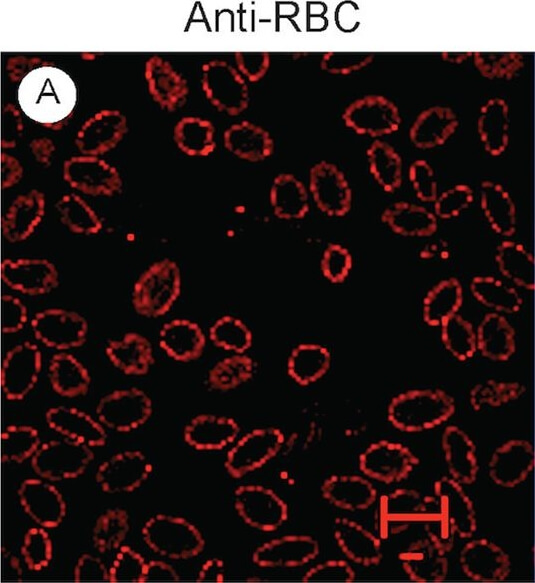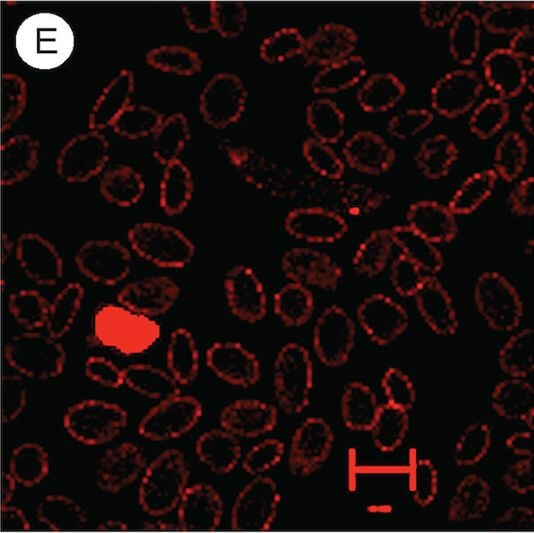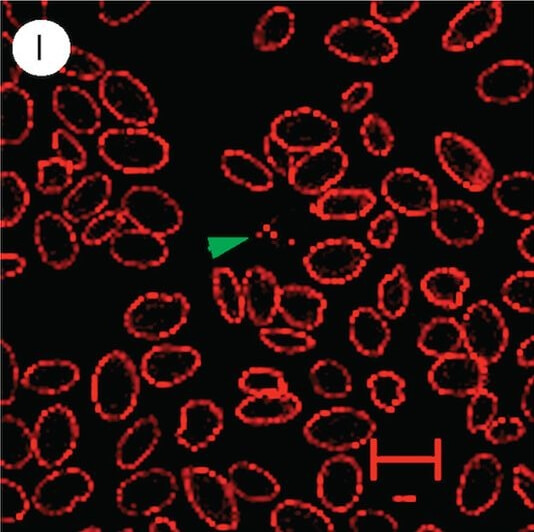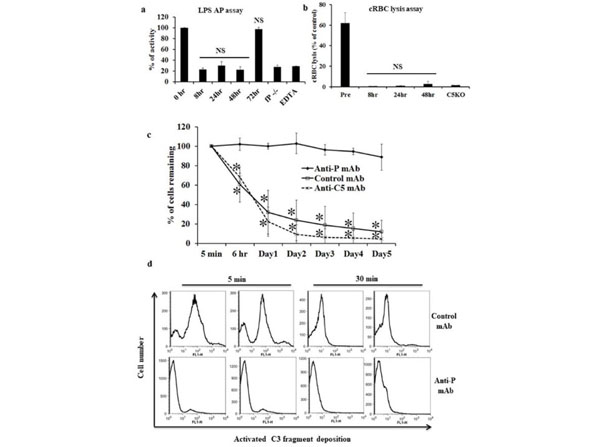Chicken Red Blood Cell RBC Antibody
Rabbit Polyclonal
7 References
103-4139
2 mL
Lyophilized
IHC, IF, Agglutination, Biochemical Assay, Multiplex
Rabbit
Shipping info:
$50.00 to US & $70.00 to Canada for most products. Final costs are calculated at checkout.
Product Details
Anti-Chicken Red Blood Cell (RBC) (RABBIT) Antibody - 103-4139
Anti-RBC antibody, Red Blood Cell Antibody, Antibody for hemagglutination, rabbit anti RBC, rabbit anti-chicken Red Blood Cells (RBC), haemolysin, hemolysin, erythrocytes sensitizing agent
Rabbit
Polyclonal
Antiserum
Target Details
Other
Chicken washed pooled Red Blood Cells (RBC)
This product was prepared from polyspecific antiserum by a delipidation and defibrination.
Application Details
Agglutination
Biochemical Assay, IF, IHC, Multiplex
- View References
Tested for agglutination of cells on titer plates. Each laboratory should determine an optimum working titer for use in its particular application. Other applications have not been tested but use in such assays should not necessarily be excluded.
Tissue Data
Red Blood Cells
Formulation
Non-sterile
60 mg/mL by Refractometry
0.02 M Potassium Phosphate, 0.15 M Sodium Chloride, pH 7.2
0.01% (w/v) Sodium Azide
None
2.0 mL
Restore with deionized water (or equivalent)
Shipping & Handling
Ambient
Store vial at 4° C prior to restoration. For extended storage aliquot contents and freeze at -20° C or below. Avoid cycles of freezing and thawing. Centrifuge product if not completely clear after standing at room temperature. This product is stable for several weeks at 4° C as an undiluted liquid. Dilute only prior to immediate use.
Expiration date is one (1) year from date of receipt.
Anti-CHICKEN Red Blood Cell Antibody may be used in hemagglutination assays. Haemagglutination assay or HA is a method of quantification for viruses or bacteria by hemagglutination. Some viral families and many bacteria have envelope or surface proteins which are able to agglutinate (stick to) human or animal red blood cells (RBC) and bind to N-acetylneuraminic acid. As each of the agglutinating molecule attaches to multiple RBCs, a lattice-structure will form. Normally, a virus dilution (e.g. 2-fold from 1:4 to 1:4096) will be applied to an RBC dilution (e.g. 0.1% to 0.7% in steps of 0.2%) for approx. 30 min, often at 4° C, otherwise viruses with neuraminidase activity will detach the virus from the RBCs. Then the lattice forming parts will be counted and the titer calculated. The titer of a hemagglutination assay is determined by the last viable "lattice" structure found. This is because it is at the point where, if diluted anymore, the amount of Virus particles will be less than that of the RBCs and thus not be able to agglutinate them together. Anti-CHICKEN Red Blood Cell Antibody is used to sensitize erythrocytes and quantitate agglutination.
Jindal S et al. (2024). Characterization of the bispecific VHH antibody gefurulimab (ALXN1720) targeting complement component 5, and designed for low volume subcutaneous administration. Mol Immunol.
Applications
Hemolytic Assay
Cone J et al. (2023). Characterization of multivalent complexes formed in the presence of more than one conventional antibody to terminal complement component C5. PLoS One
Applications
Incubation
Kusakabe J et al. (2020). Complement 5 Inhibition Ameliorates Hepatic Ischemia/reperfusion Injury in Mice, Dominantly via the C5a-mediated Cascade. Transplantation.
Applications
Hemolytic Assay
Fukuzawa T et al. (2017). Long lasting neutralization of C5 by SKY59, a novel recycling antibody, is a potential therapy for complement-mediated diseases. Sci Rep.
Applications
Hemolytic Assay
Zhao et al. (2015). The Gametocytes of Leucocytozoon sabrazesi Infect Chicken Thrombocytes, Not Other Blood Cells. PLOS One
Applications
IF, Confocal Microscopy
Teixeira V et al. (2011). Targeting the hemangioblast with a novel cell type-specific enhancer. BMC Dev Biol.
Applications
IHC, ICC, Histology; Multiplex Assay
Shin M et al. (2009). Notch mediates Wnt and BMP signals in the early separation of smooth muscle progenitors and blood/endothelial common progenitors. Development.
Applications
IHC, ICC, Histology
This product is for research use only and is not intended for therapeutic or diagnostic applications. Please contact a technical service representative for more information. All products of animal origin manufactured by Rockland Immunochemicals are derived from starting materials of North American origin. Collection was performed in United States Department of Agriculture (USDA) inspected facilities and all materials have been inspected and certified to be free of disease and suitable for exportation. All properties listed are typical characteristics and are not specifications. All suggestions and data are offered in good faith but without guarantee as conditions and methods of use of our products are beyond our control. All claims must be made within 30 days following the date of delivery. The prospective user must determine the suitability of our materials before adopting them on a commercial scale. Suggested uses of our products are not recommendations to use our products in violation of any patent or as a license under any patent of Rockland Immunochemicals, Inc. If you require a commercial license to use this material and do not have one, then return this material, unopened to: Rockland Inc., P.O. BOX 5199, Limerick, Pennsylvania, USA.




